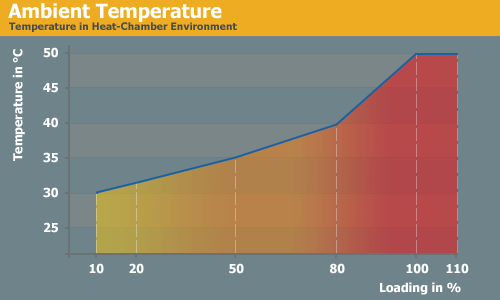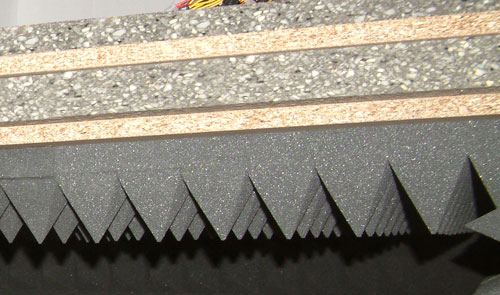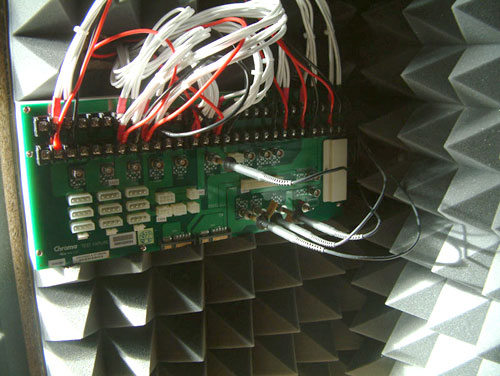Antec Signature 650W Power Supply
by Christoph Katzer on October 1, 2008 4:00 AM EST- Posted in
- Cases/Cooling/PSUs
Testing with the Chroma ATE Programmable Load

Our test equipment consists of two Chroma programmable DC Loads that enable us to test power supplies with an output of up to 1500W. The biggest advantage of the Chroma DC Loads is simply the high precision it provides. It can measure differences as small as 0.001V and 0.0001A, which will provide us with best-in-class results.
When programming the Chroma with specific amounts of load calculated according to the ATX norm, we are able to load power supplies to an exact percentage. We can now show results at every specific percentage needed. To get the best overview of a power supply, we load each unit with 10%, 20%, 50%, 80%, 100%, and 110% of the specified output. This is easy to calculate for a 1000W power supply: the 10% load is 100W and 110% load is 1100W. Remember that this is the amount of power the PSU delivers; due to inefficiencies, a power supply will actually draw more power from the wall.
Note: If you would like to know more about our testing methodology, equipment, and environment, please read our PSU testing overview.
We have added an additional 10% on the highest load to see how the units perform with overload. This test will be performed in all future reviews. The overload test is performed at room temperature as well as under more stressful conditions; to ensure we are not too cruel to the power supplies, we will keep the ambient temperature at 50°C in the stress test. Experience shows that many units can stand the overload at room temperature but will experience problems with higher temperature and overload together. Only the best-built units will survive this.

The Testing Environment
There is one flaw in testing power supplies with programmable loads while trying to measure the sound pressure levels at the same time. Because the programmable loads get very loud, there is no chance of hearing the power supply on the test stand. In order to make accurate measurements of the noise levels we needed a way to separate the test unit and the programmable loads. Our solution was to build a very thick box around the unit.

We concluded that a five-layer box with a total thickness of 6" (15cm) containing two layers of wood and three layers of special foam would suffice. It is designed as a box within a box. The inner box does not touch any part of the outer box, making it difficult for acoustic noise to pass through in the form of vibration. Each box is isolated on both sides with a layer of heavy foam that is normally used to insulate engines. On the inside we have an additional layer of 4" (10cm) thick pyramidal foam on every side of the box to eliminate the acoustic waves coming from the test object as well as we can.

To ensure a completely closed system we installed the printed circuit board that the connectors of the power supply are attached to inside the anechoic room/box. In other box designs, you would need to put all the cables through the wall. Unfortunately, that would result in the inside of the box not being fully isolated anymore. Our design keeps everything that needs to be connected inside of the box and maintains isolation.










21 Comments
View All Comments
HOOfan 1 - Thursday, October 2, 2008 - link
There is really no comparison at all, other than they are both Antec, both made by Delta, and both rated at 650W. Beyond that not much to compare, the Signature is a server grade PSU, the Earthwatts is a very decent value line PSU.1) The Signature is Modular (that costs money right there)
2) The Signature has all fully sleeved cables (costs money)
3) The Signature has a PWM controlled fan (costs money)
4) The Signature's Voltage regulation is within 1% while the EA650 is only as good as 3%
5) The Signature is as much as 3%-4% more efficient than the EA650
6) Kris thought the ripple suppression was unimpressive for the Signature (really that is pretty weird) well the EA650 has 70mV ripple on the 12V rails as opposed to less than 9mV on the Signature
7) Last but certainly not least the Signature is good for 94W more power on the 12V rails than the EA650.
The EA650 is for people who want a decent quality unit for a great price, the Signature 650W is for people who want a rock solid, stable PSU and don't care how much they pay for it.
bob4432 - Thursday, October 2, 2008 - link
where did you find this info? i have been looking for a ea650 review for over a month now and never came up w/ anything...do you have a link to a full review?HOOfan 1 - Friday, October 3, 2008 - link
well I am not sure how much anandtech would appreciate me linking to another review, but their sister site Dailytech does it all the time, so here you gohttp://www.jonnyguru.com/modules.php?name=NDReview...">Oklahoma Wolf's review of the EA650 at jonnyguru.com
bob4432 - Friday, October 3, 2008 - link
thanks for the link. i had even asked on jonnyguru's site in the past for a review, so now i get to read it :)dwvcore - Wednesday, October 1, 2008 - link
Antec makes some nice power supplies (I have used them many a times before), but they are not competitive with their prices at all ! Their Basiq and Earthwatts Series are O.K., but as soon as you step up to their signature or neo-watt series it skyrockets. An Antec 650 Signature costs $200, while you can get a 650w Corsair PSU for about $110 (newegg).JEDIYoda - Thursday, October 2, 2008 - link
Well if monmey is a factor then get the Corsair.The Antec Signature Series is supposedly the new standard by which all others are tested! -- according some knowledgeable reviewers
MamiyaOtaru - Wednesday, October 1, 2008 - link
No way in heck I am using anything smaller than a 120mm fan in my computers. Yes, that includes on the GPU, and yes that means I don't use the stock coolers. But I'm sure as heck not going for a PSU with a smaller fan. There aren't a lot of aftermarket PSU coolers out there that would let me replace the fan with a larger one.Goty - Wednesday, October 1, 2008 - link
I don't understand the stigma about smaller fans in PSUs. If the unit is designed well, you can use a smaller fan and get noise and cooling levels equal to that of a unit that uses a larger fan.erple2 - Wednesday, October 1, 2008 - link
I agree. What's the problem with a smaller fan? I think the problem is people are taking "rules of thumb" and applying them improperly. My computer chews through ~300W of power at peak loads (8800GTX, E6750, measured via my admittedly probably inaccurate UPS), and my (wasted extra) 750W power supply (PCP&C 750W Silencer) is essentially silent the whole time, with an 80mm fan. In fact, given my case design (PSU on the bottom), one of the 120mm fans would be worse for airflow than the 80mm fan I have now.I think the problem is people don't understand just how much power their computers require, and thus what loading their PSU's operate under. That dictates how much "noise" their 80mm vs. 120mm fans will generate.
SilthDraeth - Wednesday, October 1, 2008 - link
The height of a PSU isn't really able to house a 120mm fan. They can have them along the bottom, and leave the back vented, or put an 80 in the back. I don't really see what the problem is.